Even at the stage of designing a house, it is necessary to think about fresh air in the premises. And it may be that the ventilation designed by your own hands will work no worse than professionally designed. Perhaps the solution will not be so elegant – the main thing that it was workable.
Contenuto dell'articolo
Definition and seriousness of the problem
Under ventilation is understood a specially organized movement of air masses. It is necessary to create comfortable and healthy conditions for human activity. In general, the system is very complex in calculation. There are no standard solutions that suit all or at least some group of users. Each project is individual. Even the location of a single grille or fan plays a role. A lot depends on the position of the house relative to the wind rose and many other little things. To design their own ventilation worked well, you need to seriously understand.
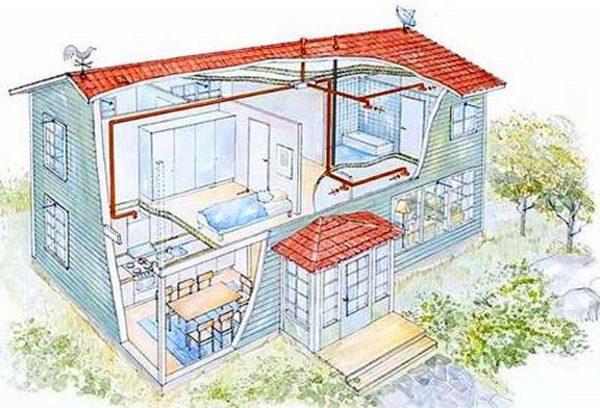
To make you realize how serious it is
According to sanitary norms, one person at rest recycles” per hour about 30 cubic meters of air. If the air is not renewed, there is less oxygen and more carbon dioxide and other waste products. As the amount of oxygen decreases, your health deteriorates. Prolonged lack of oxygen provokes the development of diseases.
A little numbers, physiologists, displaying the impact of CO2 carbon dioxide levels on the human condition:
Physiologists consider the carbon dioxide content in the air at 1400 ppm to be the lowest point for relatively normal human functioning. All readings with higher carbon dioxide levels are off the charts.
A clear example
To appreciate the severity of the situation without ventilation, here is a graph, CO2 levels. It is taken as an experiment. To assess how much ventilation is needed in a modern house/apartment with plastic windows and thermal insulation measures.
Experimental conditions. A 13 square bedroom (37 cubic meters), one person and one medium sized dog. The house has exhaust ventilation, a riser in the kitchen and in the boiler room. In the boiler room there is an extractor fan, which runs on a timer half night and half day. There is no air supply, access to fresh air through the windows, which have a function of ventilation and microventilation.

Information to explain the graph:
- Point 1. From 20 hours – working at the computer, doors ajar, window closed.
- Point 2. Window opened, doors ajar, everyone left the room.
- Between 1-2 the room was returned to, window closed, then opened. All of this can be tracked by fluctuating CO2 levels.
- Point 3. At 3-35, doors and window closed, person and dog asleep.
- Point 4. 9-20 am, the person is awake. CO2 level is 2600 ppm, well below extreme normal. Window opened, carbon dioxide levels returned to normal in less than an hour (Point 5).
As you can see from the graph, most of the night is spent with a very high concentration of carbon dioxide. This can be the cause of fatigue, poor health in the morning. In general, everything is clear. If you want, you can conduct a similar experiment yourself. All you need is a weather station with the ability to measure the level of carbon dioxide (with memory). Looking at the results of the experiment, the importance of the ventilation system is difficult to overestimate. Let’s understand how it works.
The principle of operation of ventilation of houses and apartments
All ventilation systems are divided into two types – with natural air movement and with forced air movement.
Air always moves from a zone of higher pressure to a zone of lower pressure. This property is used in natural ventilation systems. The higher pressure zone is usually located in the apartment/house. If there are ventilation passages/holes, the air from the premises tends to get to the street. But in place of the “gone” must come in a new one, otherwise the movement will stop. That is why for the normal operation of the ventilation system requires both the outflow of exhaust air and the inflow of fresh air. And this is worth taking care of. Only then the ventilation – with your own hands made/developed or not – will work effectively.
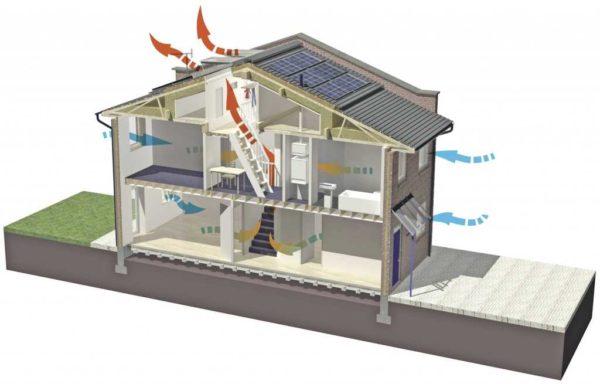
Keep in mind that “breathable” walls have nothing to do with air exchange. At best, they help regulate humidity. That’s all. Similarly, a conventional air conditioner does not add oxygen. It only maintains the set parameters of already existing air. It removes only excessive moisture and has nothing to do with air exchange. Air inflow should be provided as well as outflow, using windows (not the most effective way) or special devices.
Problems of air supply
It would seem that it’s easy to make a hole in the wall – that’s the oxygen supply. Maybe somewhere it is so, but not in our climate, when most of the year on the street temperature is far from comfortable. What’s wrong? A whole range of unpleasant moments:
As you can see, a “simple” hole in the wall becomes a very tricky device. Moreover, few things on this list can be neglected. It will be too uncomfortable to exist.
Exhaust ventilation
Exhaust ventilation in an apartment building is a large pipe that passes through all floors and goes to the roof. All apartments “in the riser” are connected to it. Under normal conditions, due to the pressure difference between the apartment and the roof, a “draft” is formed, which pulls the air out of the premises (it also works if there is an inflow).
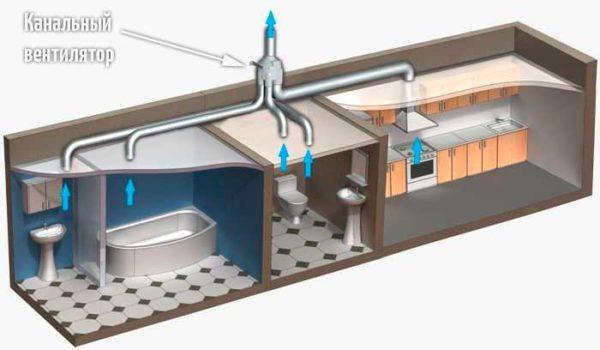
In apartment buildings, risers are usually located in the kitchen and/or bathroom. All other rooms are ventilated through these hoods. For normal air exchange in the bathroom door and in the kitchen it is necessary to provide ventilation gaps (under the door or make cross-flow holes in the wall) or install grilles.
In a private house, everything is organized in the same way: in the kitchen or bathroom install the main vent channel, which is led to the roof. End it in the attic is not worth it. Even if the attic is cold and ventilated. With the temperature difference and high humidity of the removed air is formed a large amount of condensation. Even with good ventilation in the attic, it does not have time to be removed, “wet” ceiling, damp walls. In general, it is a bad idea.
Material for air ducts
A few words about the material from which to make an exhaust ventilation duct in a private house. Most often use galvanized pipes, and – round cross-section. They have a resistance to air flow is minimal. Second place in popularity are plastic air ducts. They have more problems – they accumulate static, which contributes to the accumulation of dust, less resistant to fire. To the pluses can be attributed simpler installation, the availability of ready-made shaped elements, with which it is easy to create any system. In the case of these materials, the choice is yours – what you like more, and use it.
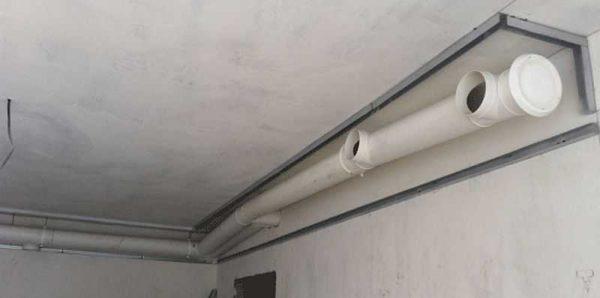
What you should not do – to throw out the exhaust duct from the brick. First, it is expensive (you need a foundation for it), and secondly, it is the most problematic in operation, because it has uneven walls, which contributes to the accumulation of dust. In the brick walls, not covered with a metal sleeve, condensation accumulates, because of which the brick quickly deteriorates. In general, brick exhaust ducts are a thing of the past.
Additional devices
What else may be necessary in the exhaust system is check valves. They prevent the air from moving in the opposite direction, which occurs when the draft overturns.” When the pressure in the apartment/house becomes lower than outside. Check valves also prevent odors from the kitchen/toilet from spreading to other rooms connected to the duct.
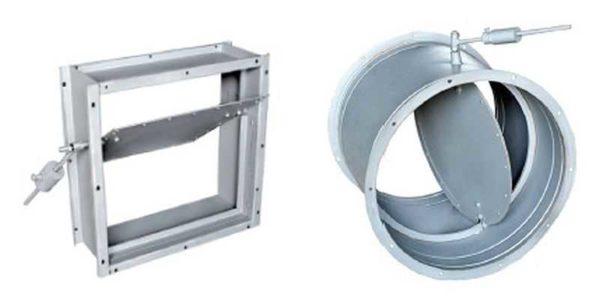
In general, the device of the exhaust system is simpler. But only if the cross-section of the vent channel is correctly calculated, the route is correctly drawn up and competently installed.
Natural or forced
Ventilation is of two types – natural and forced. What is better? It is difficult to say unequivocally. Everyone decides for himself, taking into account all the advantages and disadvantages of both types.
Natural ventilation in the house works due to the difference in pressure in the room and on the street (due to the existence of the very “natural draught”). Its advantages – silence, independence from electricity. Minuses – low productivity because of which large cross-section pipes are needed, the inability to control/regulate the intensity of work, dependence on the state of the environment. In summer, natural ventilation often does not work, and sometimes it works in the opposite direction. This is when through the exhaust vent channel “pulls” hot air into the room.
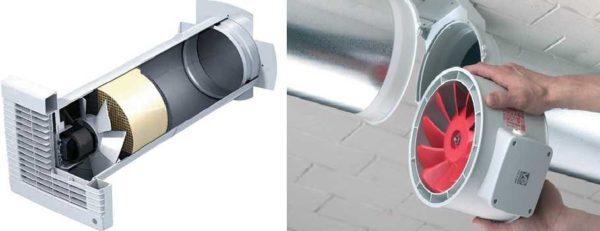
In forced ventilation, air movement is provided by fans. It can be regulated, it works in any weather, but only if there is electricity and operable fans. And this is a minus. Even two. The first – energy dependence, the second – the noise that fans make during operation. Therefore, in forced ventilation systems, many prefer to use plastic ducts. It is because they are “quiet”.
Schemes of ventilation of a private house and an apartment
The simplest option is realized in small houses and apartments. Supply openings are located in living rooms, extractors – in the kitchen and bathroom. The air entering the rooms through the slits under the doors penetrates into the kitchen and bathroom, where it is discharged. Such a scheme works when the area is not more than 100 squares.
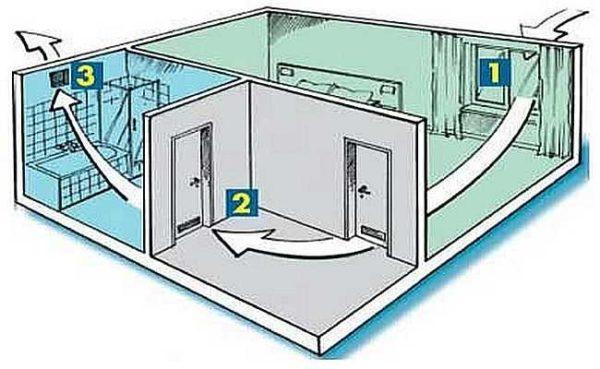
In houses with a total area of more than one hundred and fifty squares, organizing two separate systems – supply and exhaust. Each of them has its own system of air ducts. In this arrangement, each room has exhaust and supply openings in each of the rooms. In this case, the intensity of the air supply and exhaust can be adjusted in each room, so that the atmosphere can be adapted to the requirements of its inhabitants.
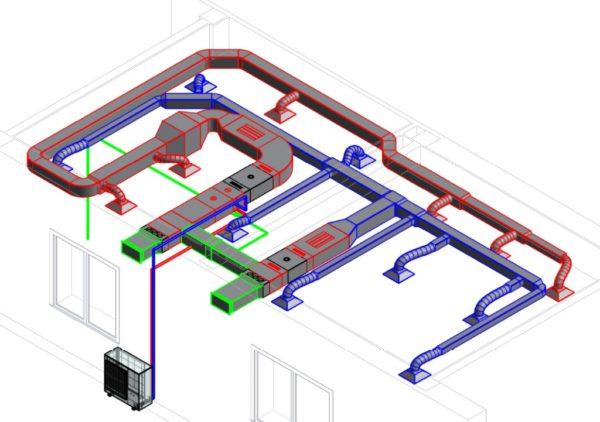
With centralized supply ventilation system it is easier to prepare the air taken from the street – it is possible to make a single system of cleaning, heating. The prepared air can already be distributed to the rooms. In this case, each room has two ventilation openings – one supply and one exhaust. They are located in opposite corners, closed with grilles or diffusers.
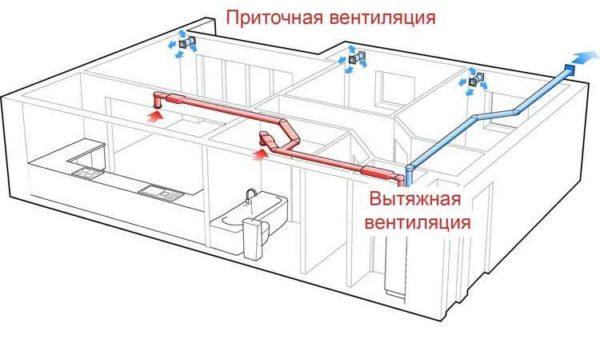
Even with a large area of the house supply ventilation system can be made decentralized, as in the first scheme. With the right selection of equipment, it will work no less effectively. The question is what will be economically more profitable, as you will have to solve the problem of air preparation for each supply channel. And the equipment is not cheap at all.
Ventilation with your own hands: a plan of action
To independently design a ventilation system, you will have to perform a number of actions. It is easier if the sequence is known.
Lavoro di preparazione
Gathering information and elementary calculations – this is where the independent creation of the ventilation project begins.
- Calculate the multiplicity of exchange in the entire house/apartment. It depends on the volume of rooms (you need to count the cubature of each room), their purpose, the number of residents. According to sanitary norms in residential premises air should be changed once an hour, in technical (kitchen/bathroom/toilet) – at least three times an hour. The norms for boiler houses are different and should be taken into account (depending on the type of heating). Adding up all the figures, we get the required capacity of the system, according to which the cross-section of the exhaust duct is considered, the capacity of ventilation equipment is selected.
- Draw a scheme of air flows. In this case, immediately have to figure out the position of the inlet and exhaust ducts.
- Draw the scheme of air ducts. So far without dimensions and detailing, just sticking to the rules and trying to fit the system, not too complicating the design. This is where it gets tricky, as the ducts can only be hidden behind a suspended or stretched ceiling. Otherwise they will be exposed.
The preliminary data is ready. Some more time to think about where and what devices should be located.
Parameter calculations and detailing
When all questions on the scheme are solved, it took the final form, we proceed to detailing. First there are also calculations, then you have to look for the components of the system, decide what firm to use the equipment and summarize the budget.
- Calculate the cross-section of ducts, based on the exchange rate, the volume of the room and the speed of “silent” air movement. Otherwise it will be impossible to live.
- Enter the dimensions on the diagram (you can redraw them).
- Carry out detailing. That is, make a list of the necessary elements of the system, specifying the type and cross-section.
- Calculate the resistance of each section of the system, select fans (according to the operating point in the characteristic taking into account the obtained resistance of the system). Take into account the level of noise from the fan operation, take measures to reduce it (select a low-noise model).
- Calculate the cost of the system components. Try to bring together “cash” with desires. Here you have to change components several times, moving from what you want to what is real.
- We draw a clean project with full detailing. It is necessary to remember also about nodes of passage of ventilating ducts through walls/ceiling/roof, consumables and insulation materials, ventilation grids and diffusers, fasteners and all other “little things” which result in a decent sum.
Installation and customization
“It remains” to find, buy, mount. It is written little, and the forces, time, nerves for the realization of this point will require a lot. Only after this can we say that Ventilation with their own hands is completely ready.
But this is not all. Made with your own hands ventilation should be launched, adjusted. This is also not the easiest process – to achieve coordinated operation of the system as a whole. Then, in the process of operation, readjustment has to be done often. When changing the season, changing the number of residents, changing weather conditions. In general, the adjustment of the ventilation system is another responsibility of the homeowner.
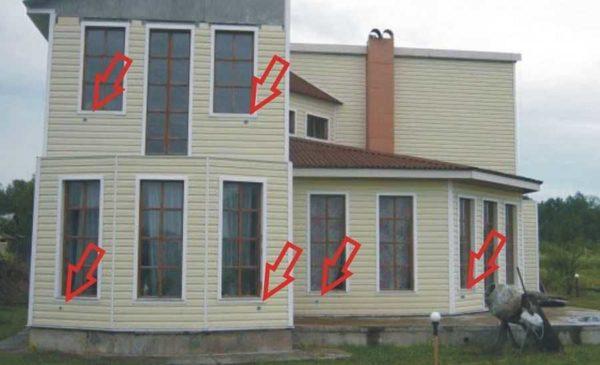
By the way, we advise you to think about it. Ventilation with their own hands (meaning installation) will cost less, but knowledge and time requires more. Knowledge can be learned, and if there is a lack of time, you will have to search for and hire performers, then accept their work.
Other solutions
The market does not stand still, and today new solutions are offered. For example, there are recuperator systems, which at once, through a single hole in the wall, remove the exhaust air and supply fresh air. This is an ideal solution if the ventilation is concerned after the renovation or if it is necessary to solve the problem only in some rooms. The main thing is that these rooms have at least one wall facing the street.
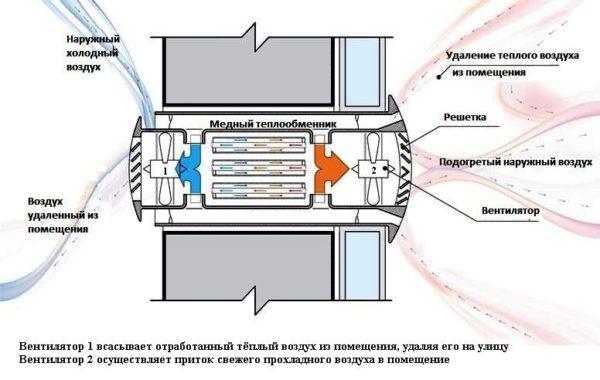
The disadvantage of this method of organizing ventilation in a house or apartment is one – the price of such equipment. The cost of one such device – more than 400$.

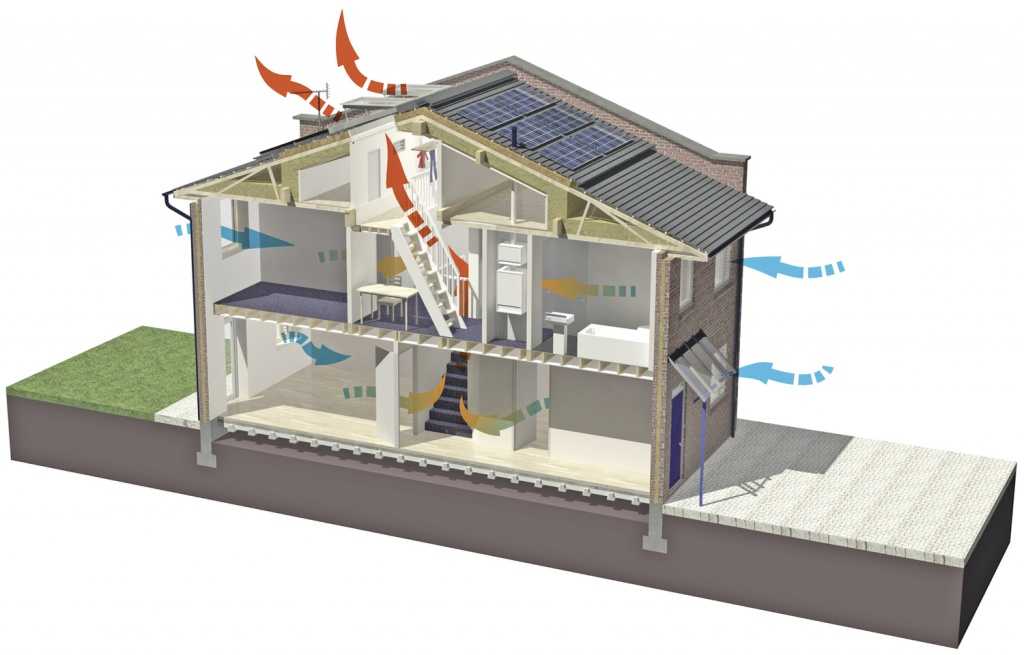
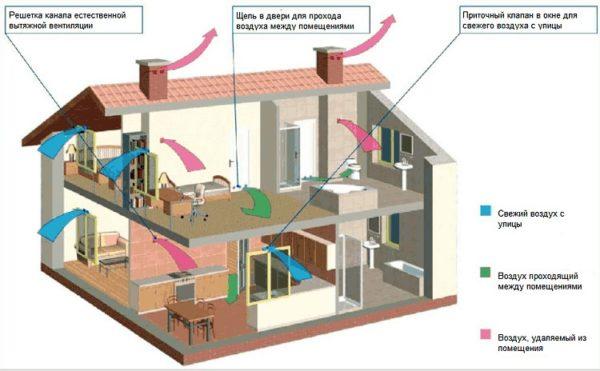
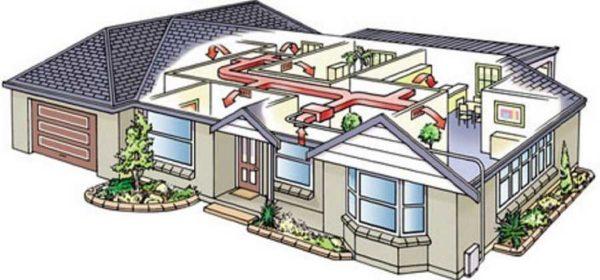

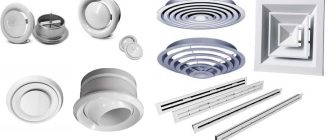
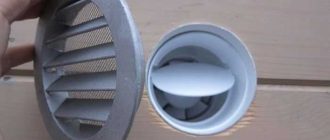



Hey, I totally get the struggle with ventilation! I once tackled a mold issue by setting up a solid exhaust system. It made such a difference in air quality. If you want fresh air in your space, don’t skimp on good ventilation! It’ll save you headaches later!